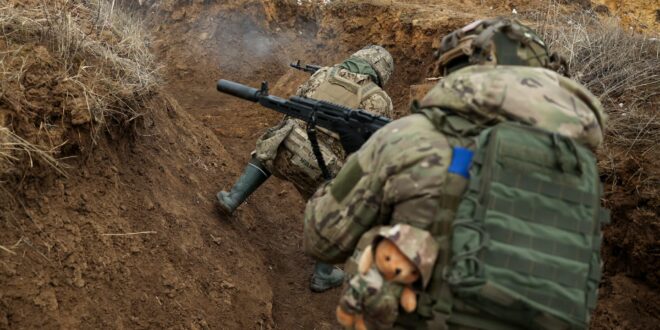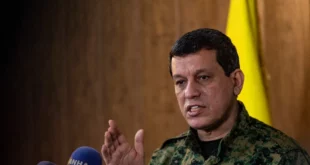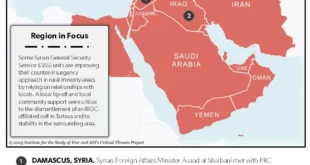According to high-ranking Ukrainian officers, the military picture is grim and Russian generals could find success wherever they decide to focus their upcoming offensive.
KYIV — Wayward entrepreneur Elon Musk’s latest pronouncements regarding the war in Ukraine set teeth on edge, as he warned that even though Moscow has “no chance” of conquering all of Ukraine, “the longer the war goes on, the more territory Russia will gain until they hit the Dnipro, which is tough to overcome.”
“However, if the war lasts long enough, Odesa will fall too,” he cautioned.
With a history of urging Ukraine to agree to territorial concessions — and his opposition to the $60 billion U.S. military aid package snarled on Capitol Hill amid partisan wrangling — Musk isn’t Ukraine’s favorite commentator, to say the least. And his remarks received predictable pushback.
But the billionaire entrepreneur’s forecast isn’t actually all that different from the dire warnings Ukrainian President Volodymyr Zelenskyy made in the last few days. According to Zelenskyy, unless the stalled multibillion-dollar package is approved soon, his forces will have to “go back, retreat, step by step, in small steps.” He also warned that some major cities could be at risk of falling.
Obviously, Zelenskyy’s warnings are part of a broad diplomatic effort to free up the military aid his forces so desperately need and have been short of for months — everything from 155-millimeter artillery shells to Patriot air-defense systems and drones. But the sad truth is that even if the package is approved by the U.S. Congress, a massive resupply may not be enough to prevent a major battlefield upset.
And such a setback, especially in the middle of election campaigns in America and Europe, could very well revive Western pressure for negotiations that would obviously favor Russia, leaving the Kremlin free to revive the conflict at a future time of its choosing.
Essentially, everything now depends on where Russia will decide to target its strength in an offensive that’s expected to launch this summer. In a pre-offensive pummeling — stretching from Kharkiv and Sumy in the north to Odesa in the south — Russia’s missile and drone strikes have widely surged in recent weeks, targeting infrastructure and making it hard to guess where it will mount its major push.
And according to high-ranking Ukrainian military officers who served under General Valery Zaluzhny — the commander-in-chief of Ukraine’s armed forces until he was replaced in February — the military picture is grim.
The officers said there’s a great risk of the front lines collapsing wherever Russian generals decide to focus their offensive. Moreover, thanks to a much greater weight in numbers and the guided aerial bombs that have been smashing Ukrainian positions for weeks now, Russia will likely be able to “penetrate the front line and to crash it in some parts,” they said.
They spoke on the condition of anonymity to speak freely.
“There’s nothing that can help Ukraine now because there are no serious technologies able to compensate Ukraine for the large mass of troops Russia is likely to hurl at us. We don’t have those technologies, and the West doesn’t have them as well in sufficient numbers,” one of the top-ranking military sources told POLITICO.
According to him, it is only Ukrainian grit and resilience as well as errors by Russian commanders that may now alter the grim dynamics. Mistakes like the one made on Saturday, when Russia launched one of the largest tank assaults on Ukrainian positions since its full-scale invasion began, only to have the column smashed by Ukraine’s 25th Brigade, which took out a dozen tanks and 8 infantry fighting vehicles — a third of the column’s strength.
However, the high-ranking Ukrainian officers reminded that relying on Russian errors is not a strategy, and they were bitter about the missteps they say hamstrung Ukraine’s resistance from the start — missteps made by both the West and Ukraine. They were also scathing about Western foot-dragging, saying supplies and weapons systems came too late and in insufficient numbers to make the difference they otherwise could have.
“Zaluzhny used to call it ‘the War of One Chance,’” one of the officers said. “By that, he meant weapons systems become redundant very quickly because they’re quickly countered by the Russians. For example, we used Storm Shadow and SCALP cruise missiles [supplied by Britain and France] successfully — but just for a short time. The Russians are always studying. They don’t give us a second chance. And they’re successful in this.”
“Don’t believe the hype about them just throwing troops into the meat grinder to be slaughtered,” he added. “They do that too, of course — maximizing even more the impact of their superior numbers — but they also learn and refine.”
The officers said the shoulder-fired anti-tank missiles supplied by the U.K. and U.S. in the first weeks of the invasion came in time, helping them save Kyiv — and so, too, did the HIMARS, the light multiple-launch rocket systems, which were used to great effect, enabling them to push Russia out of Kherson in November 2022.
“But often, we just don’t get the weapons systems at the time we need them — they come when they’re no longer relevant,” another senior officer said, citing the F-16 fighter jets as an example. A dozen or so F-16s are expected to be operational this summer, after basic pilot training has been completed. “Every weapon has its own right time. F-16s were needed in 2023; they won’t be right for 2024,” he said.
And that’s because, according to this officer, Russia is ready to counter them: “In the last few months, we started to notice missiles being fired by the Russians from Dzhankoy in northern Crimea, but without the explosive warheads. We couldn’t understand what they were doing, and then we figured it out: They’re range-finding,” he said. The officer explained that Russia’s been calculating where best to deploy its S-400 missile and radar systems in order to maximize the area they can cover to target the F-16s, keeping them away from the front lines and Russia’s logistical hubs.
The officers also said they now need more basic traditional weapons as well as drones. “We need Howitzers and shells, hundreds of thousands of shells, and rockets,” one of them told POLITICO, estimating that Ukraine needed 4 million shells and 2 million drones. “We told the Western partners all the time that we have the combat experience, we have the battlefield understanding of this war. [They] have the resources, and they need to give us what we need,” he added.
Europe, for its part, is trying to help Ukraine make up for its colossal disadvantage in artillery shells. And in this regard, a proposed Czech-led bulk artillery ammunition purchase could bring Ukraine’s total from both within and outside the EU to around 1.5 million rounds at a cost of $3.3 billion — but that’s still short of what it needs.
The officers emphasized that they need many, many more men too. The country currently doesn’t have enough men on the front lines, and this is compounding the problem of underwhelming Western support.
However, Ukraine has yet to pull the trigger on recruitment ahead of the expected Russian push, as authorities are worried about the political fallout mobilization measures might bring amid draft-dodging and avoidance of conscription papers. Zaluzhny had already publicly called for the mobilization of more troops back in December, estimating Ukraine needed at least an additional 500,000 men. The draft issue has gone back and forth ever since.
Then, last week, General Oleksandr Syrsky — Zaluzhny’s replacement — abruptly announced that Ukraine might not need quite so many fresh troops. After a review of resources, the figure has been “significantly reduced,” and “we expect that we will have enough people capable of defending their motherland,” he told the Ukrinform news agency. “I am talking not only about the mobilized but also about volunteer fighters,” he said.
The plan is to move as many desk-bound uniformed personnel and those in noncombat roles to the front lines as possible, after an intensive three- to four-month training. But the senior officers POLITICO spoke to said that Syrsky was wrong and “playing along with narratives from politicians.” Then, on Tuesday, Zelenskyy signed some additional parts to an old mobilization law tightening the legal requirements for draft-age Ukrainian men to register their details, and lowering the minimum age for call-up from 27 to 25. But in Ukraine, this is just seen as tinkering.
“We don’t only have a military crisis — we have a political one,” one of the officers said. While Ukraine shies away from a big draft, “Russia is now gathering resources and will be ready to launch a big attack around August, and maybe sooner.”
So, Musk may not be too wide of the mark after all.
 Eurasia Press & News
Eurasia Press & News



